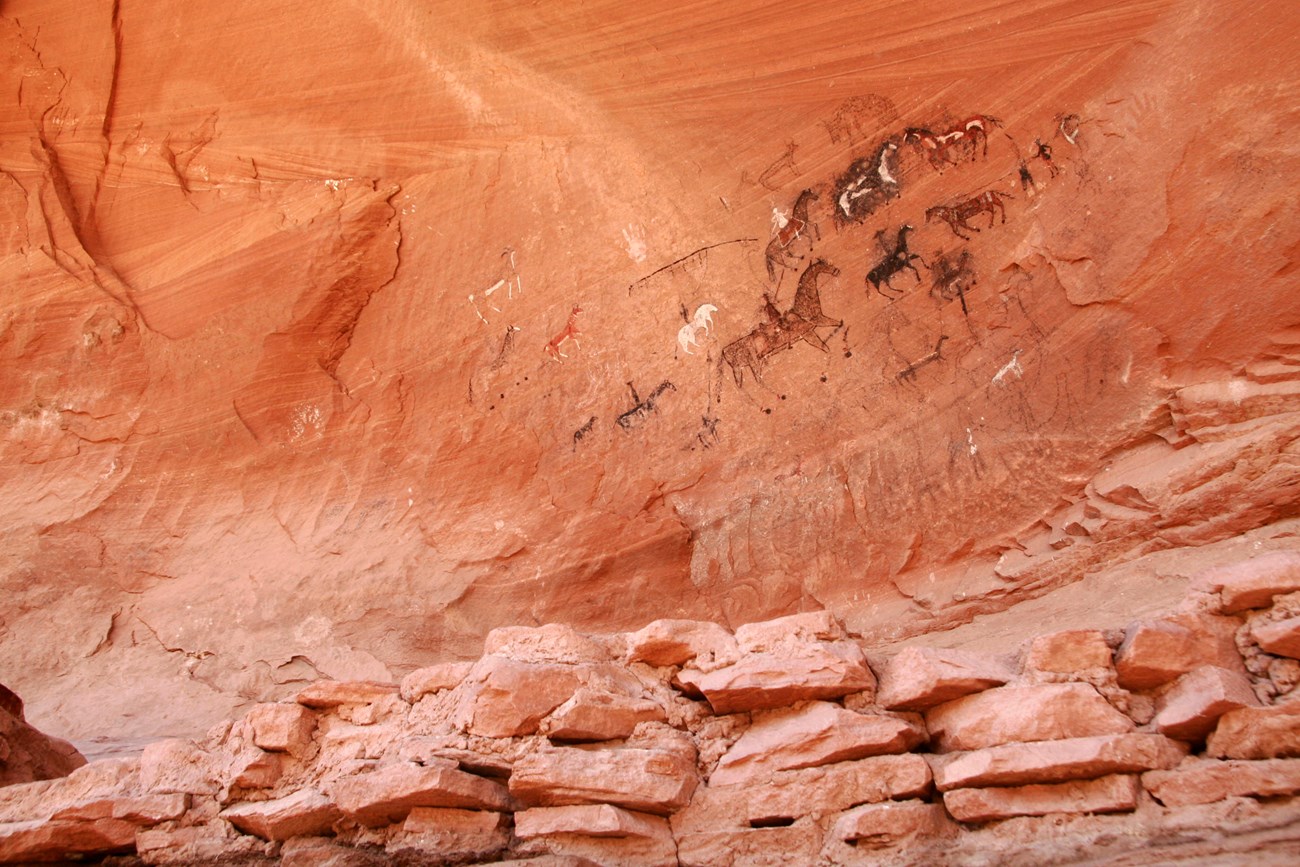Last updated: July 8, 2025
Article
Are Petroglyphs, Pictographs, and Inscriptions “Art”?

NPS photo.
"Rock art” is a common way to refer to petrolyphs, pictographs, and inscriptions. Some people, however, believe that the phrase "rock art" is inaccurate and even harmful. Native Americans point out that their ancestors had no word for “art” or a meaning like it.
Native Americans working with archeologists and anthropologists have teased out why rock markings should not be called "rock art." They argue that the concept of art comes from a Western worldview, not a Native American one. Art in Western society is about aesthetics, workmanship, and emotional and intellectual responses. These elements make up the value and purpose of art in Western society.
For Native Americans, rock markings held sacred and utilitarian purposes for communication or ceremonies and rituals. They represented significant cultural themes or messages. In this way, rock markings are much like baskets, beadwork or painted ceramics. These items and rock markings wove together with the cultural and spiritual worlds as one. While a Western perspective may consider these items traditional Native American “art,” in historical context it meant something very different.
Europeans and European Americans who made rock markings, however, did have the word “art” in their vocabularies. In these cases, the makers’ intent is still important to consider. Based on where the inscriptions are found, archeologists and historians believe that they were not created to be art, but to mark or commemorate a moment in time.
We do not know what people in the past called their rock markings. Out of respect for Native Americans and their cultural heritage, archeologists and anthropologists are shifting away from using “rock art.” When you view petroglyphs and pictographs, consider what your worldview brings and take away a deepened appreciation for their cultural significance from another perspective.
Image-making, however, continues to be an important part of Native American culture. Today, Native Americans draw on ancient motifs and concepts in their creative processes.
Watch:
- Duration:
- 3 minutes, 54 seconds
Some of the oldest and longest lasting images that humans made in the Southwest are mysterious markings and pictures picked or painted on cliffs, alcoves, and boulders. These images are generally referred to as Rock Art, but are more a type of communication than art. Perhaps they should be called Rock Writings instead, as they communicate culturally significant ideas and messages.
